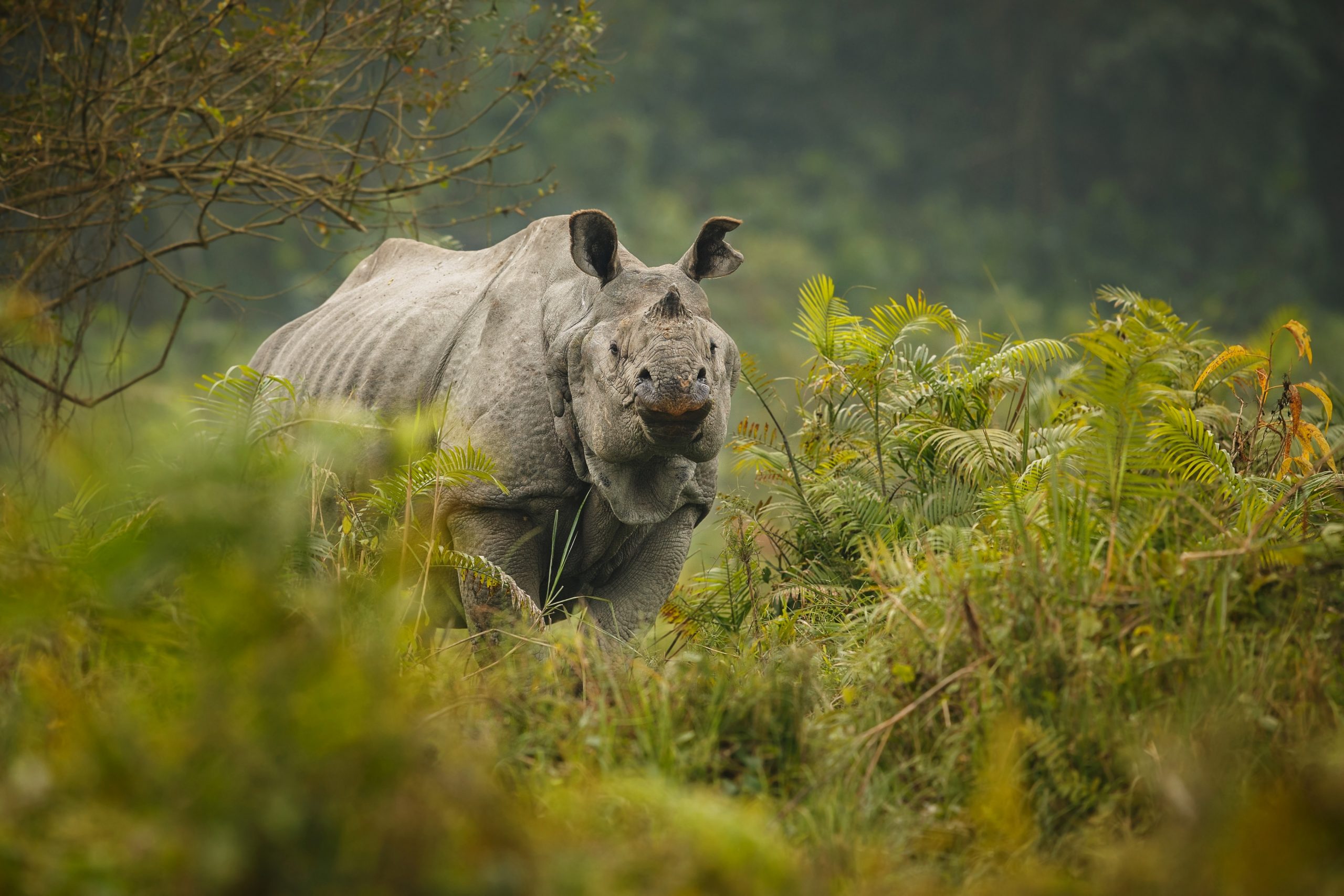News Highlights
The Greater one horned rhinos of western Assam’s Manas National Park are expected to have high life expectancy and significant growth in population, the 14th Assam rhino estimation census has revealed.
Focus Points
- Prior to 1990, Manas, a UNESCO World Heritage Site and tiger reserve, had approximately 100 resident rhinos.
- But a prolonged ethno-political conflict thereafter took a heavy toll with extremist groups known to have traded the horns of the herbivores for weapons.
- A rhino reintroduction programme under the Indian Rhino Vision 2020 was started in 2006.
- This included rhinos from Kaziranga National Park and Pobitora Wildlife Sanctuary, as well as orphans raised at the Centre for Wildlife Rehabilitation and Conservation in Kaziranga.
- The current rhino population in the park was estimated at 40 after the census on April 1 and 2.
- The park’s rhinos have a male-female sex ratio of 1:1
- Rhino Census taken place: all three ranges – Bhuyan Para, Bansbari and Panbari
- Method followed to Count the species
- The total area is divided into smaller units or blocks separated by natural barriers such as rivers or streams and forest paths, with population closure in mind.
- According to the report, this means that no animals can enter or exit during the counting process.
- Limitation of the method
- Within a small area of 10-20 square kilometres, population closure cannot be established satisfactorily.
- Total count requires high visibility to observe the animals from a distance, which is not possible with “shy, cryptic animals.”
About Greater One Horned Rhino
- Greater One Horned Rhino also called Indian Rhino is a rhinoceros species native to the Indian subcontinent
- Protection Status of Greater One Horned Rhino
- IUCN Red List – Vulnerable
- CITES – Appendix I (Threatened with the extinction and CITES prohibits the international trade in specimens of these species except when the purpose of the import is not commercial, for instance for scientific research).
- Wildlife Protection Act of 1972 – Schedule I
- Where do we find the Greater One Horned Rhino?
- Threats
- Poaching
- Habitat Loss
- Human-Rhino Conflict
- Population density
- Genetic diversity is dwindling.
- What is being done to protect them?
- The five rhino range countries (India, Bhutan, Nepal, Indonesia, and Malaysia) have signed the ‘New Delhi Declaration on Asian Rhinos 2019’ for the species’ conservation and protection.
- The Ministry of Environment Forest and Climate Change (MoEFCC) has begun a project to create DNA profiles of all rhinos in the country.
- National Rhino Conservation Strategy: It was launched in 2019 to conserve the greater one-horned rhinoceros.
- Indian Rhino Vision 2020 (IRV2020), WWF India is working with the government of Assam and other partners to increase the population from about 2500 to 3000 and expand the distribution to seven Protected Areas
- Reducing Illegal Trade: Several measures are being taken to stop the illegal trade of rhino horn by its concerned organisation along with TRAFFIC, a wildlife trade monitoring network.
Kaziranga National Park
- Location: located in the state of Assam. It is the largest undisturbed and the most representative area in the Brahmaputra Valley floodplain.
- Protection Status:
- In India:
- In 1974, it was designated as a National Park.
- Since 2007, it has been designated as a tiger reserve.
- Internationally
- In 1985, it was designated as a UNESCO World Heritage Site.
- Kaziranga has been identified by Birdlife International as an Important Bird Area
- In India:
- Rivers Passes through it
- Four main rivers — Brahmaputra, Diphlu, Mora Diphlu and Mora Dhansiri and have numerous small water bodies.
- National Highway Passes Through it
- The National Highway 37 passes through the park area
- This highway starts from Sutarkandi near Karimganj in Assam and terminates at Bhali in Manipur.
Manas National Park
- Location: Manas National Park is a national park, Project Tiger reserve, biosphere reserve and an elephant reserve in Assam,
- The park is known for its rare and endangered endemic wildlife such as the Assam roofed turtle, hispid hare, golden langur and pygmy hog.
- Manas is famous for its population of the wild water buffalo
- Protection Status:
- 1905: Manas was proposed to become a Reserve Forest
- 1907: Declared a Reserve Forest.
- 1973: Manas declared as Bio Reserve
- 1985: Manas declared a World Heritage Site by UNESCO
- The Manas river is a major tributary of Brahmaputra River, which passes through the heart of the national park.
Pic Courtesy: freepik
Content Source: The Hindu



